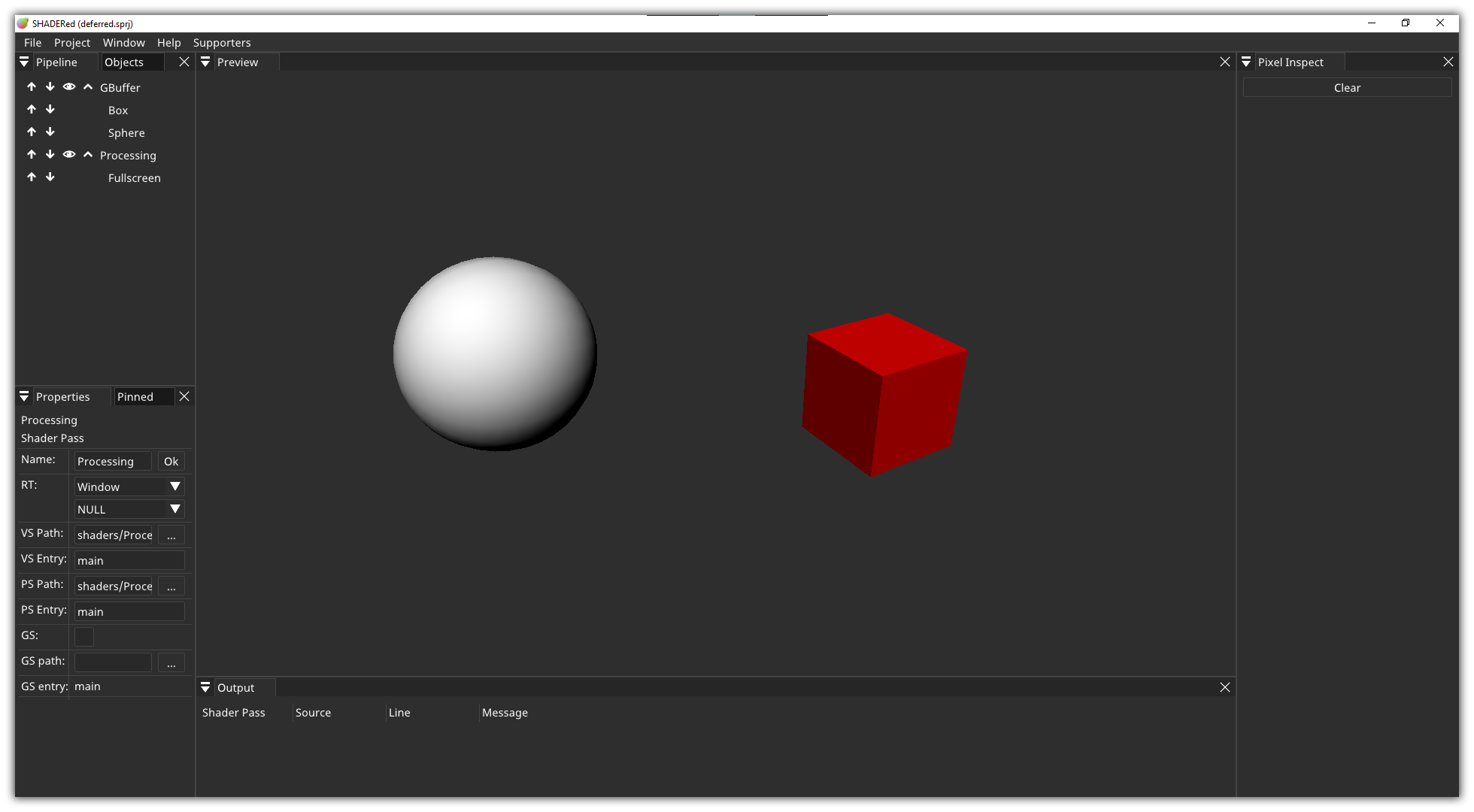

Input = passes > 3 ? input.SuperResPass(original, strength, softness, hqdownscaling) : input Input = passes > 2 ? input.SuperResPass(original, strength, softness, hqdownscaling) : input Hqdownscaling = default(hqdownscaling, true)Īssert((passes > 0 & passes = 0 & strength = 0 & softness = 0 & softness 1 ? input.SuperResPass(original, strength, softness, hqdownscaling) : input 25, true, """nnedi3_rpow2(2, cshift="spline16resize")""")įunction SuperRes(clip input, int "passes", float "strength", float "softness", bool "hqdownscaling", string "upscalecommand") It's missing a bunch of color conversions, the core SuperRes function and a custom Diff that copies the source's Y into the diff's A.
#HLSL SHADER VIEWER FOR MAC CODE#
This code does an approximation of SuperRes. If someone wants to pick it up, here's what I found. At the pace things are going (knowing nothing of C++, AviSynth dev or DirectX), I'm better leave that aside. Return float4(result.rgb/result.a, result.I've done a bunch of research and testing. Sampler2D overlyingSampler : register(s1) įloat4 main(float2 uv : TEXCOORD) : COLORįloat4 overlying = tex2D(overlyingSampler, uv) įloat4 underlying = tex2D(underlyingSampler, uv) įloat4 result = blend(abs(overlying.rgb – underlying.rgb), overlying, underlying) Sampler2D underlyingSampler : register(s0) Return blend(float4(blended, overlying.a), underlying) (newcolor is the result of advanced blending (for ex, overlying.rgb * underlying.rgb))įloat4 blend(float3 newcolor, float4 overlying, float4 underlying)įloat alpha = overlying.a * underlying.a įloat3 blended = newcolor*alpha + ((1-alpha)*overlying.rgb) Performs advanced “over”-type blending Performs “over”-type blending (colors must be premultiplied by alpha)įloat4 blend(float4 overlying, float4 underlying)įloat3 blended = overlying.rgb + ((1-overlying.a)*underlying.rgb) įloat alpha = underlying.a + (1-underlying.a)*overlying.a I write this shader (for ex., for difference): My results slightly differ from photoshop. Hi, I’ve been beating my brains out trying to blend two layers in case both are semitransparent.

glsl file, because I forgot a line in the ContrastSaturationBrightness() function and I had some issues on specific hardware due to conditional returns, so now it’s fixed. It’s just the same thing than the Gradient Map… of the Create new fill or adjustment layer in Photoshop but blended in Color mode, which reminds me Color Temperature and Cross-Processing effects 🙂

Vec3 result = BlendColor(color, splitColor) Oh and by the way you noticed the Split-Tone pass in my example: Here is my GLSL code, almost all the blending modes are macros and some do per-channel operation so it could run faster using vector operations with masks (to take into account the values per component), but still I guess it could help 🙂

Here is the list of blending modes and functions I got: Vec3 pass4 = mix(pass3, BlendLinearLight(pass3, color), 0.4) Vec3 pass2 = mix(pass1, BlendColor(pass1, verticalGradientColor.rgb), verticalGradientColor.a) Vec4 verticalGradientColor = texture1D(GradientGround, uv.y) Vec3 pass1 = BlendColor(color, splitColor) Vec3 splitColor = texture1D(GradientMap, colorDesat.r).rgb Vec4 colorDesat = Desaturate(color, 1.0) Translating Photoshop operations on layers gives this kind of code: So I adapted a big part of the C-like code from this famous Photoshop blending mode math page + missing blending modes to GLSL (and now HLSL!) code and I added a few other useful things from Photoshop, such as Hue/Saturation/Luminance conversion, desaturation, contrast.įor example, I tried combining a few things in my Editor: I usualy play with Photoshop to try post-processing effects on photos or game screenshots, it’s a lot faster than coding directly anything in shaders, but at the end I wanted to see my effects running in real-time.


 0 kommentar(er)
0 kommentar(er)
